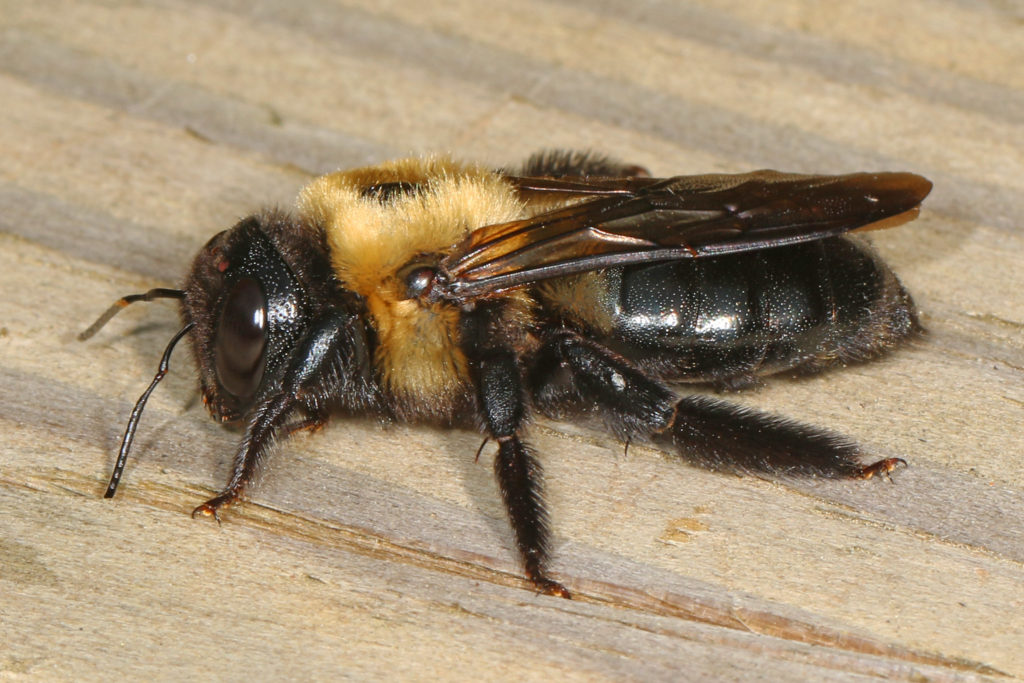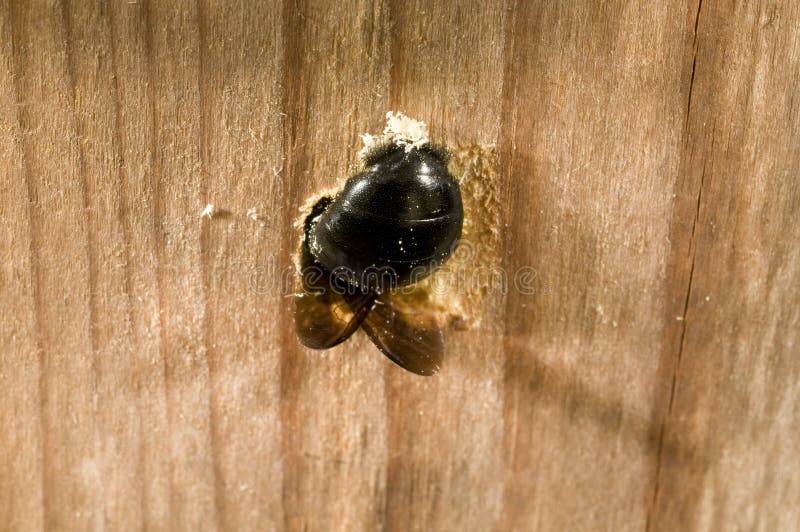

Unlike bumblebees and wasps, carpenter bees are not social insects. Though the carpenter bee lacks power tools, the shape of the hole could just as well be easily mistaken for the work of an actual drill. The size of the hole is just about equal to the diameter of the female carpenter bee’s body, at just about under 0.5 inches wide. Even on flat, unbroken wood surfaces, female carpenter bees may take it upon themselves to drill out a round entrance for the next if necessary. Over the course of multiple years, the tunnels that a carpenter bee excavates could increase by several feet. Along the path, the segmentations will be cultivated into brood cells for the larvae. After about 1 or 2 inches have been covered by the perpendicular excavation, the tunnel will take a sharp right angle turn that continues along a relatively straight path. Typically, the tunnel that the carpenter bee excavates will be perpendicular to the grain of the wood. Without any outside interference, it will take just under two months for the carpenter be to progress from its larval form to its complete adult form.

The combs contain individual larvae that feed upon a deposit of food left by their late mother until they reach maturity and can fly out to continue the cycle. In a sense, a carpenter bee nest could be described as an elongated “tail” of combs that snakes through the face of the infested wood. Carpenter bees create winding, segmented tunnels through the wood that they designate to be their nest. IDENTIFYING THE NESTĬarpenter bee nests have a very distinctive appearance that makes them fortunately easy to identify on sight. Though carpenter bees will generally always prioritize getting into unpainted wood over painted wood, the larger variations of the species will sometimes excavate painted wood all the same.

Redwood, oak, cypress, fir, and pinewood are all of the carpenter bee’s most favorite types of wood to sink its mandibles into. If you have any dry railings or windowsills, then you have a perfect invitation for a carpenter bee to begin excavating.Ĭarpenter bees have particularly strong preferences when it comes to the type of wood that they are most likely to target. The carpenter bee earns its namesake by digging into worn down wooden objects to plant its offspring, especially if the wood lacks a coat of paint. Much like many other bees, carpenter bees have a taste for nectar and pollen. COMMON WOOD PREFERENCESĬontrary to popular belief, carpenter bees do not literally eat wood. We have several solutions for each bee type. No matter the kind of bee people always ask “what is the best carpenter bee trap”. Carpenter bees can generally always be distinguished by their distinctly metallic sheen, which differs heavily from the characteristically fuzzy profile of the bumblebee. Typically, bumblebees will have many more hairs on the top of their abdomen than carpenter bees. It may be easy to initially mistake carpenter bees for bumblebees, but one of the easiest ways to distinguish carpenter bees from bumblebees is the fact that the hair on carpenter bee legs generally isn’t as vibrant or voluminous as bumblebee legs. The diverse color variations of carpenter bees can range from metallic blue to greenish black, though both the female and male carpenter bees will have golden hairs that are prominently displayed on their thorax and legs. The smaller carpenter bees are generally under 8 mm long in size, while the larger ones can reach up to 25 mm long. Generally speaking, the larger carpenter bees are the more problematic variation of the two. If you have issue with carpenter bees, get in touch with professionals at. There are two distinct kinds of carpenter bees: smaller carpenter bees, and larger carpenter bees.


 0 kommentar(er)
0 kommentar(er)
